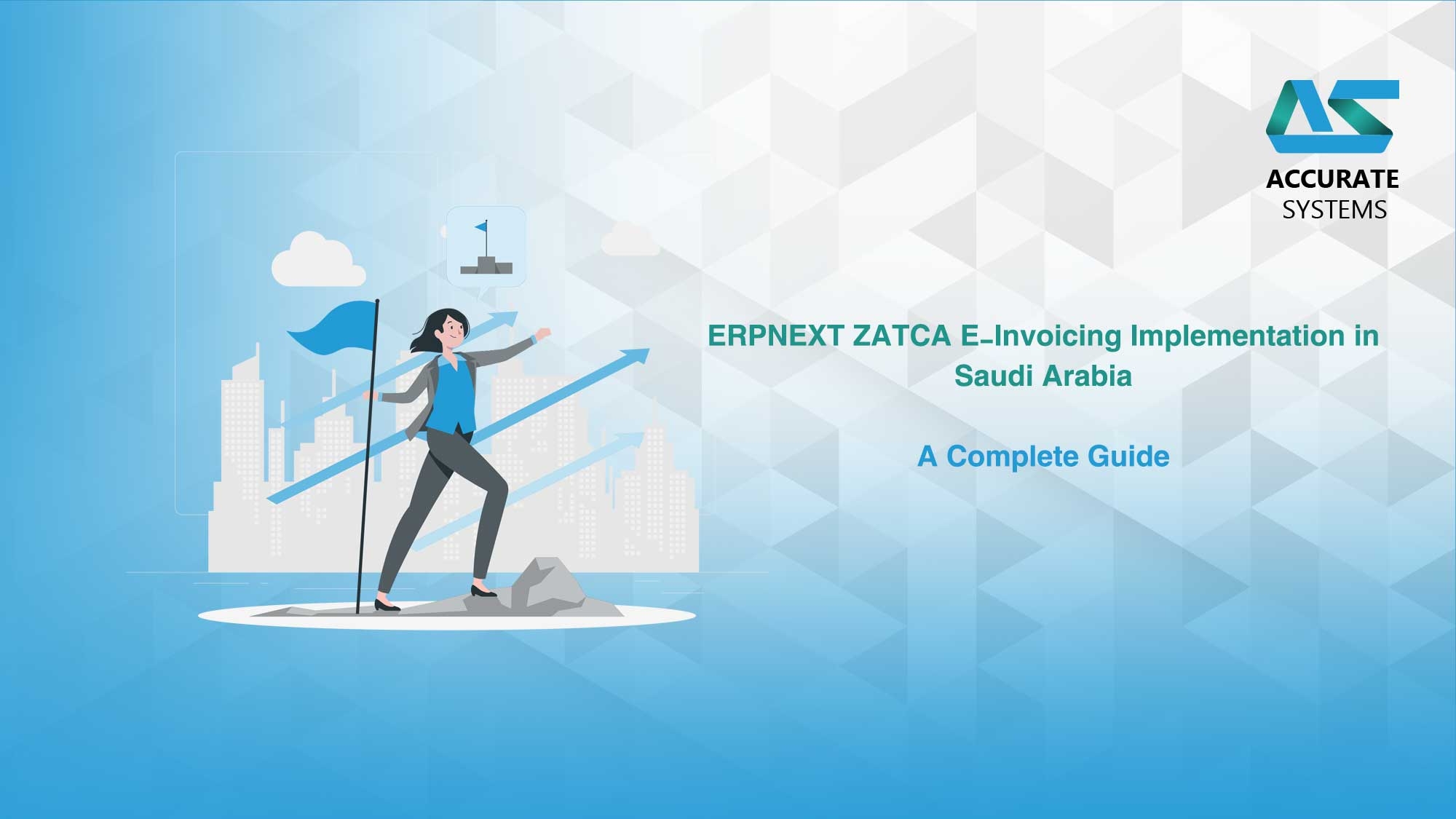Overview of ZATCA’s E-Invoicing Mandate
The General Authority of Zakat and Tax (ZATCA) in Saudi Arabia has implemented a mandatory e-invoicing system for all businesses operating within the kingdom. This mandate aims to enhance tax compliance, promote transparency, and simplify business processes by transitioning from traditional paper invoices to a more efficient electronic system.
Why ERPNEXT is Ideal for ZATCA E-Invoicing Compliance
ERPNEXT is a popular open-source ERP solution that offers powerful features for businesses looking to comply with ZATCA’s e-invoicing regulations. Below are some key reasons why ERPNEXT stands out:
- Seamless ZATCA Integration: ERPNEXT integrates smoothly with ZATCA’s e-invoicing platform, ensuring businesses stay compliant.
- Comprehensive Functionality: The system supports the entire invoicing process, including invoice generation, storage, transmission, validation, and reporting.
- Customizable Solutions: ERPNEXT can be tailored to meet the specific needs of your business.
- Active Community Support: A large, engaged community provides resources and assistance when needed.
Step-by-Step Guide to Implementing ERPNEXT for ZATCA E-Invoicing
- Installation and Configuration: Begin by installing ERPNEXT and configuring it to meet ZATCA’s specific requirements.
- ZATCA Integration: Obtain necessary credentials from ZATCA and integrate them with ERPNEXT’s system.
- Invoice Template Creation: Create compliant invoice templates that adhere to ZATCA’s formatting rules.
- Workflow Setup: Define the workflow for invoice creation, approval, and transmission.
- Testing and Validation: Conduct thorough testing to ensure the system operates in compliance with ZATCA regulations.
- Go Live: Once testing is complete, begin using ERPNEXT for real-time e-invoicing.
Case Study: Eastern Health Cluster’s Success with ERPNEXT
The Eastern Health Cluster, a leading healthcare provider in Saudi Arabia, implemented ERPNEXT to comply with ZATCA’s e-invoicing mandate. This case study highlights the challenges faced and the solutions deployed:
- Data Validation: Ensuring all data is accurate to avoid invoice rejections.
- API Connectivity: Monitoring and maintaining a stable API connection with ZATCA.
- Integration Complexity: Using ERPNEXT’s customization options and professional support to handle complex integrations.
- Security: Implementing strong security protocols to protect sensitive data.
- Regulatory Adaptation: Staying updated with ZATCA’s regulatory changes and adjusting the system accordingly.
Best Practices for ERPNEXT Implementation in ZATCA E-Invoicing
- Data Accuracy: Ensure data is precise and consistently validated to prevent errors.
- Thorough Testing: Perform comprehensive testing to identify and address any potential issues before going live.
- Regular Updates: Keep both ERPNEXT and ZATCA compliance regulations up to date to avoid disruptions.
- Professional Assistance: Consider hiring an expert if you encounter difficulties during the setup or integration phases.
- Security: Implement strong security measures to protect your business and client data.
- Automation: Leverage ERPNEXT’s automation capabilities to streamline the invoicing process.
- Community Support: Engage with the ERPNEXT community to access resources and advice.
Deep Dive into ZATCA Integration with ERPNEXT
Integrating ERPNEXT with ZATCA’s e-invoicing platform requires a careful understanding of both systems. Here’s a more detailed look at the process:
- Familiarize with ZATCA’s Platform: Understand the technical requirements and functionalities of ZATCA’s e-invoicing platform.
- Register for ZATCA Credentials: Register your business on ZATCA’s platform and obtain the necessary API credentials.
- Configure ERPNEXT: Set up ERPNEXT to use ZATCA’s API endpoints effectively.
- Invoice Transmission: Ensure that your invoices are correctly generated and transmitted to ZATCA for validation.
- Error Handling: Implement error-handling mechanisms to address issues promptly.
Common Challenges in ZATCA Integration with ERPNEXT
Several challenges may arise during integration, but these can be mitigated with proper planning and execution:
- Data Validation Errors: Double-check data accuracy to ensure compliance with ZATCA’s rules.
- API Connectivity Issues: Maintain a stable internet connection and address any API-related errors promptly.
- Complex Integrations: Use ERPNEXT’s customization features or seek external help for complex integrations.
- Security Concerns: Protect your data by implementing robust security measures.
- Regulatory Changes: Regularly monitor ZATCA’s updates to ensure continued compliance.
Key Benefits of Implementing ERPNEXT for ZATCA Compliance
- Enhanced Efficiency: Automating the invoice generation process reduces manual errors and speeds up operations.
- Improved Compliance: Automatic validation ensures that your business adheres to ZATCA’s e-invoicing regulations.
- Centralized Financial Data: ERPNEXT consolidates financial data from multiple sources into one system, simplifying management.
- Enhanced Reporting: Generate detailed financial reports to aid in decision-making and analysis.
- Simplified Audits: ERPNEXT’s system makes compliance audits more straightforward and reduces the risk of discrepancies.
Conclusion
Implementing ERPNEXT for ZATCA e-invoicing compliance can help businesses in Saudi Arabia streamline their operations and maintain regulatory compliance. The Eastern Health Cluster’s success story is a testament to the system’s effectiveness in managing complex financial data and meeting ZATCA’s rigorous standards.
By following the outlined steps, best practices, and leveraging ERPNEXT’s powerful capabilities, businesses can achieve full compliance with ZATCA’s e-invoicing mandate while optimizing their financial processes for the future.


